A Glossary to Increase Sales on Shopify
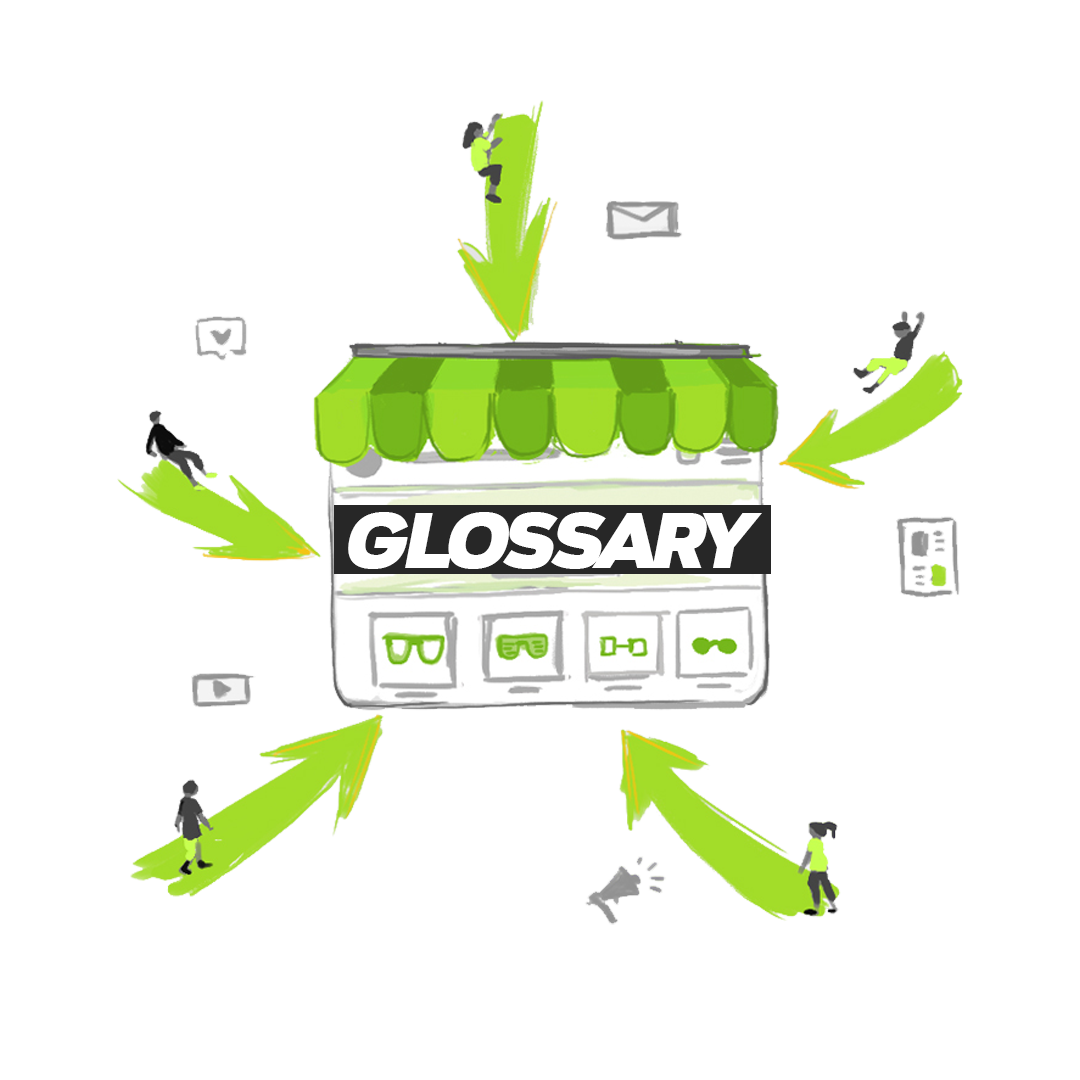
A common pattern we find with ecommerce business owners – especially one from brick-and-mortar shops – is frustration with the frustration with the jargon, acronyms, and lingo used when discussing ways to best increase sales on Shopify.
“This will help your CPC decrease, thereby increasing your ROAS and ensuring your website’s SEO becomes more robust and dynamic, funneling customers along the AIDA hierarchy. In fact, we may move to a CPM ad model soon over CPC. Or would prefer a PPC payment model?”
…. WHY! WHY SO CONFUSING?!?! It can almost seem like online marketers are purposefully throwing difficult jargon out there to test the business owner’s knowledge of the e-commerce landscape. From there… it becomes doubtful their sole aim is to help your business increase sales on Shopify. Instead, beating you over the head with technical lingo gives the sense marketers want to muddle the conversation to the point it’s impossible to get a straightforward answer on how exactly their services helps your business. It all can feel very esoteric and disconnected from your promotional goals to increase sales on Shopify.
To help combat overcomplicated explanations, Ad360 wants to provide a small glossary of terms – and how they work in an online marketing context – so you feel knowledgeable and secure when discussing your business aims with potential clients or partners. That way, as you search for ways to boost your Shopify sales, you won’t be lost when discussing the more technical side of online marketing.
Pay-Per-Click (PPC)
PPC (Pay-Per-Click) is a standard online advertising method, where businesses agree to a specific amount charged every time a customer actually “clicks” on their ad. It involves setting a “maximum amount” you are willing to “per per click,” but, based on other factors, you may not end up actually paying that amount!
Let’s say there are 3 keywords you want to establish a Google ad campaign for, and each one is ~$3 per click. You want to make sure you get at least 100 clicks, so 100* 3 keywords *$3.00 per click = $900 ad budget. HOWEVER! If you pick keywords with less “competition” (less companies bidding for the same keyword), you can bring that cost down per click. PPC ad channels are a fundamental tool to increase sales on Shopify. See the next term for more info on that 😊
Cost-Per-Click (CPC)
CPC (cost-per-click) is basically the “other side of the coin” and relates directly to PPC (pay-per-click). While PPC (pay-per-click) is the actual ad campaign itself, CPC (cost-per-click) refers to the amount your business ends up actually paying to run the campaign. Instead of the max amount you set, CPC refers to the “average cost per click” you end up paying. Based on your ad’s quality, the keywords use, and the day-to-day changes in the marketplace, your CPC will fluctuate. However, you will never pay more than the “max amount” you set when starting your “pay-per-click” (PPC) campaign.
CPC ad campaigns are best when the goal is not to spread broad awareness of visibility of your site, but for increasing sales on Shopify through upping your conversion rate. By paying for each click, you are ensuring you do not pay a dime to the publisher until customers actually click on the ad.
Cost Per 1,000 Impressions (CPM)
More accurately, CPM stands for “Cost per mille,” the latin prefix for “1,000.” In contrast to “Pay-Per-Click” (CPC) campaigns, CPM campaigns focus on web visibility rather than conversions. Businesses pay a certain amount per 1,000 “impressions,” meaning 1,000 people at least scrolled past the ad on their web browser or app.
CPM campaigns are best for awareness campaigns in the online ecosystem because there is no guarantee users will actually engage with your ad. If you only run CPM campaigns, you risk being scrolled by, paying for thousands of impressions but landing no conversions. When trying to get customers comfortable with your brand, it can help to run a few CPM campaigns. When looking to increase sales on Shopify by boosting conversions, you should consider other ad channels besides CPM.
Click-through Rate (CTR)
CTR (Click-through Rate) indicates the percentage of visitors who, after seeing your ad – referred to as an “impression” – actually took the step of consciously clicking your ad to view your landing page! Major online advertisers like Google and Facebook keep track of how many “impressions” your ad received, meaning these metrics are available to online business owners. Measuring your CTR will be important when analyzing how to best increase sales on Shopify.
CTR (click-through rate) is related to your conversion rate – the percentage of visitors who actually end up purchasing something. For example, if you have 100 visitors and 10 perform a “buy” action, that is a 10% conversion rate (10/100). Pay attention to both when assessing ways to improve your digital marketing strategy and boost sales on Shopify!
Return on Ads spent (ROAS)
Return on Ads Spent (ROAS) is a more convention marketing metric most business owners will understand and recognize. Basically,
The wrinkle in ecommerce ROAS is making sure you use the right customer data and analytics to calculate an accurate ROAS for each campaign. Whether using Facebook ads, Google ads, or another platform, remember you should be running segmented “niche” ad campaigns that may vary in their purpose and structure. With that in mind, you want to attribute your increased revenue to the correct ads. Doing so will ensure you can distinguish which ad channels are bringing in a high ROAS vs which ones, after A/B testing, are proving to be a dud with your audience.
ROAS is closely related to ROI (Return on Investment), which takes into account the product cost when calculating your overall profit margin. When working to increase sales on Shopify, it is important to know the merits of each metric. Again, taking the 360 degree view, it is important you can sort out which ad campaigns are attributed to bumps in your revenue! Otherwise, any clarity on which ad channels are truly driving your ROAS become muddled. Retrace which ads were responsible for which conversions, and you’ll gain much greater insight into what boosts your Shopify sales 😊
Bounce Rate (BR)
These terms are more straightforward – bounce rate is simply the percentage of online users who leave your page without taking any action. No further clicking, no purchases, nada. Make sure to not let any slick-talking marketer take your bounce rate out of context. Sure, it’s an important metric and acronym to know, but it doesn’t mean jack until it’s put into context with the rest of your website.
Regardless, you want users to feel there are plenty of cool options to continue clicking through your site, so step into the shoes of the customer, check out your home page, and ask yourself, “What design pieces or clickable links/buttons can I put in here to keep my customer’s attention?” Answering that question will be a big step toward increasing your sales on Shopify!
Call to Action (CTA)
Call to Action buttons are those “big shiny red buttons” in the movies that you want to click… in this case, the world won’t blow up if you do. Instead, you’ll boost your Shopify sales!
While too many can become a distraction, make sure mobile ads, landing pages, email campaigns, and basically all your social media ads have clear, beautiful, aesthetically pleasing and even “fun-looking” CTA buttons. One of the biggest issues Ad360 sees when working with clients is a lack of CTA buttons that make it easy for the customer to purchase from your site, converting more sales for you. More conversions mean increased sales on Shopify, so definitely reassess how you have organized your CTA buttons across all your ads, social media posts, and your ecommerce site itself.
AIDA Customer Awareness Funnel –
AIDA is a customer model that segments your audience into 4 basic categories:
1. Attention – do customers know you exist? Do they know they have a problem, and you offer a solution with your product? At this point, you are providing valuable information to your customer, not being “pushy” or “In your face” with your product offering. Folks ain’t ready yet.
2. Interest – Customers here are leaning forward. They like what they heard already, and you’ve officially piqued their curiosity. It doesn’t mean they are ready to buy, but they are primed to hear your offer.
3. Desire – Ok, now they’re ready to buy. Here, you re-enforce why your product is desirable to your audience. Take it from the point of view, “How do I communicate to my audience their lives will be better off buying my product?” Make them desire that end goal.
4. Action – You have a customer ready to purchase! Make sure your website is secure and optimized so the buying process is smooth, and follow up with them in an email newsletter or something of the sort! You may have a new regular 😊
AIDA has utility in providing structure to multi-channel ad campaigns. That way, different segments of your audience receive different messaging depending on their “awareness” of your product. You can prepare ad banners that cater to each level of the AIDA funnel, giving you a 4-pronged attack when increasing sales on Shopify! It’s a nice framework for guiding your promotional efforts.
Search Engine Optimization (SEO)
Search Engine Optimization (SEO) is thrown around a ton, and we have done a full article on it here, but basically, it encompasses all the factors that help bump your ecommerce store on the rankings. A higher ranking on Google directly correlates to increased sales on Shopify, so it is crucial you consider the SEO factors for your online business, some of which are listed below:
- Genuinely interesting and engaging content with quality keywords
- Good-length text descriptions
- Site speed and optimized loading time
- Quality backlinks that lead users from an outside side to yours (be prepared to pay for this)
Search Engine Results Page (SERP)
Search engine results dictate a huge portion of web traffic, and SERP is simply the acronym for the “pages” that list each result. Being on page 1 is a highly, highly desirable position. If your business makes it onto page of one Google’s SERPs, you will almost certainly see an increase in sales on Shopify.
Secure-Socket Layer/Transport Layer Security (SSL/TLS)
Both SSL and TLS are acronyms for the technology that encrypts customer payment info at checkout. Make sure you have a good provider and include their trust badge, verifiable by the customer by clicking on the badge itself. The badge should lead directly to the third-party certification of your site. These encrypted “checkout” technologies make your customer feel more secure when purchasing from your site, thereby increasing your customer conversion rate on Shopify.
Quick note – TLS is the more modern and secure version of checkout encryption technology, so go for a TLS certification if you can manage it.
Conclusion: Knowing Digital Marketing Metrics can Boost Shopify Sales
Now if you see these words casually thrown around on the Internet, you’ll feel confident in your response. Throwing out a piece of complicated jargon or acronyms is a classic way for marketers to “size up” what kind person they are dealing with. Based on your response, they decide whether you are someone they can “gloss over” meaningful details with, or are someone who will ask hard questions and demand better solutions. We hope this glossary of terms serves to make more the latter and not the former 😊
If you want 24/7 support willing to walk you through each stage of digital marketing, reach out for a free demo from Ad360 today! Acronyms aside, we commit to providing services all relating back to the core goal: increasing your Shopify sales. Boost your bottom line with Ad360 today!
Promote your Shopify Store in 1 click
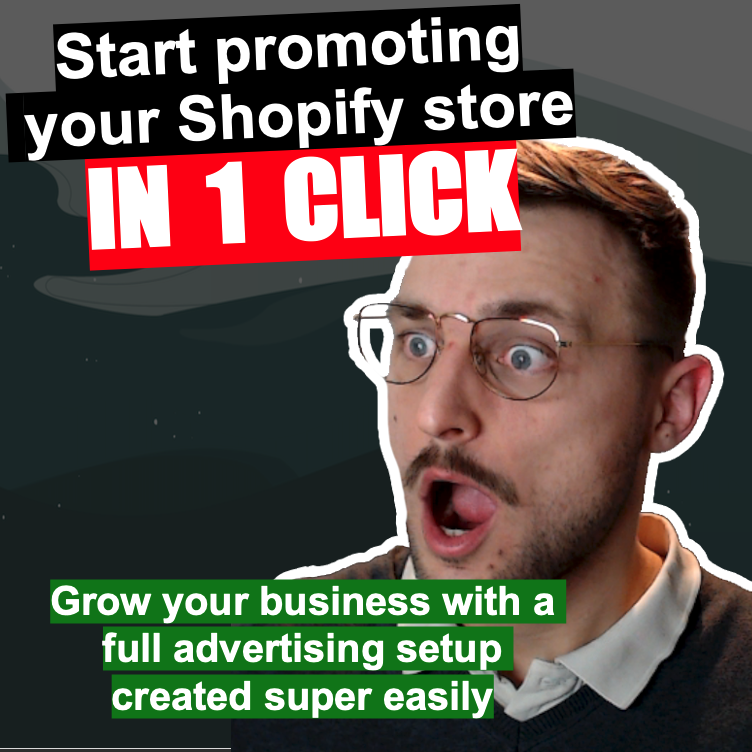
What if you could start promoting your store in just one click?
What if complex advertising tools, headaches setting up tedious targeting options were a thing of the past?
Imagine if you could just log into your Shopify store and start advertising in just 1 click…
This dream is now a reality with Ad360’s Quick Ads!
With just one click, you can start promoting your store and advertise your products all over the web and in mobile apps.
You don’t need any technical knowledge, advertising skills, and marketing experience. You don’t need to have expensive designer-made banners or videos.
With just a single click, Ad360 App for Shopify automatically generates ads based on your product’s image, title, and price, and runs ads on websites, news sites, blogs, and perhaps in your favorite mobile app too!
Get a 14-day Free Trial by installing Ad360 App for Shopify today!
The Best App to Increase Sales on Shopify
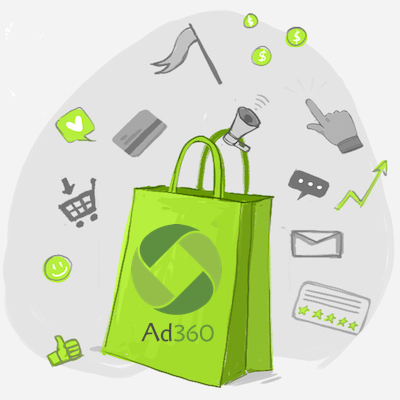
5 Reasons Why
1) Quick Ads: One Click to Increase Sales on Shopify
Leading off with the crown jewel of Ad360, Quick Ads distills your online ad campaign settings to only “2 inputs” – budget and location. That’s it. Set those, and your next ad campaign is off and running!
The Quick Ads software, several years in the making, automatically organizes your promotions across not only social media, search engines, and mobile apps – but the entire web itself. Establishing ad campaigns on popular social media platforms and search engines can be exhaustive, as well as a major time drain to managers running day-to-day operations. We simplify the task of starting a new, effective online ad campaign down to one click.
Compare that to the multi-faceted “Ad dashboards” you see on popular social media sites or search engines – they make your eyes water with complexity. Quick Ads uses powerful software, developed over several years, to analyze and automatically set the options that best serve your ad campaign’s needs.
Ad360 considers Quick Ads its crowning achievement and the culmination of years of development. So, please reach out if you have any questions on how Quick Ads integrates to help increase sales on Shopify! We’ll be eager to show you through our free demo. It’s the core reason why Ap360 is now the best Shopify app to increase sales in 2022.
2. Live 24/7 Support to Help Strategize How to Increase Sales on Shopify
Unlike companies that automate their feedback to you, Ad360 has live 24/7 support. We are 100% dedicated to getting to know our clients and their business on a more personal level. Ad360 offers private consultations, where we evaluate the current state of your e-commerce site, creating reports with actionable tips on how to increase your sales on Shopify. All advice is geared toward improving the e-commerce shopping experience for your customers, so they grow to love your brand and products 😊
You get a chance to work with data science and online marketing experts to better grasp the difference between online ad platforms. As an example, Google Display ads do not work the same way as Facebook ads, and Tik Toks ads are different still! Leveraging these different platforms, and figuring out how to increase sales on Shopify, can be a lonely task for independent business owners.
You now have a place to ask questions about the nuances of e-commerce advertising and get informed answers from some of the most dedicated professionals in the e-commerce industry. We’ll help analyze where your customers are in the Shopify sales funnel, ensuring your customer outreach efforts are not redundant or ineffective
Our dedication to 24/7 live support is part of what makes Ad360 the best Shopify app to increase sales.
3. A Centralized Shopify Sales Dashboard for ALL Ad Campaigns
While other marketing apps for Shopify apps may help with specific functions – such as email campaigns, SEO, or ad banner generation – none are as comprehensive and streamlined as Ad360’s “total web” central ad dashboard.
Having one place to run and manage ads across all social media platforms, search engines, mobile apps, and the worldwide web itself is an innovation unique to Ad360. The simple, cozy, intuitive interface will empower you to view and manage all online ads, giving you a “bird’s eye view” of your promotional efforts. The ease and efficiency of Ad360’s central dashboard will free up time, energy, and resources to explore further how to increase sales on Shopify
The feature even gives access to automatically generated data visualizations and graphs that illustrate sales trends most impacting your business. As a certified Google partner, it is a great complement to the newly-release Google 4 analytics
4. Instantly Generated Ad Banners
Some e-commerce business owners are excellent managers and have incredible products – but their budget doesn’t allow for a freelance or full-time graphic designer. So, their “limiting reactant” in the “how to increase sales on Shopify,” equation, so to speak, is the ad visuals themselves! The writing copy may not use the right persuasive techniques, or the picture may not look as sleek and professional as the hundreds of ads users see scrolling and browsing online.
Ad360 solves the ad banner issue by extracting your Shopify store data and instantly generating over a dozen options for a single ad banner. We pull the product picture, price, and any more relevant info directly from the site for you to review and give any final touches before the ad’s release. Our automatic ad banner generation relieves your burden of constantly creating new ads to catch your audience’s attention. Designs, shapes, colors, and the message itself are all customizable – we just provide a bevy of options personally tailored to your Shopify store 😊 That way, you can add a personal touch that speaks directly to your niche audience, a key element to help increase sales on Shopify
5. We Implement the Holy Grail of Sales Conversion Rates: Hyperlocal Ad Retargeting
The number one technique to increase sales on Shopify is ad retargeting – yet we are amazed at the number of e-commerce sites that do not take advantage of it! Remember that 97-98% of online visitors, on average, leave without buying. That means out of 100 potential customers, you would only have information on 2-3 of them! No bueno.
Ad360 will deploy hyperlocal ad retargeting to every layer of your online advertising efforts – why? It enables you to “tag” the customer information of the 97-98% who leave your site and follow up with them for future promotional deals! Most customers prefer to see multiple ads before they “know” your brand and buy anyway. Ad360 does so while following the most stringent customer privacy regulations, while still providing a turnkey solution for how to increase sales on Shopify. Bringing ad retargeting to every level of your online business is a focus of Ad360, and we know it gives your e-commerce store the best chance for sales success.
Conclusion: Let Us Prove Ad360 is the Best Shopify App to Increase Sales
Skeptical? We understand 😊 That is why Ad360 offers a free demo to test the services listed above. When it comes to the question, “How do I increase my sales on Shopify,” we believe we have the best solution on the market today. Contact us now to learn more!
Quick Ads: A Story of Success
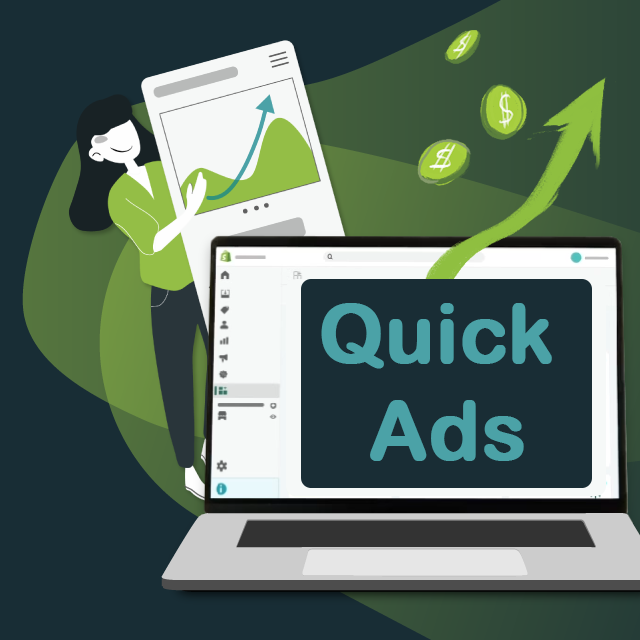
Introduction: The Difficulties of Ad Campaigns Before Quick Ads
The following is an amalgamation of real stories told online by business owners who, despite their best efforts, did not have the time, tech savvy, or financial resources to successfully leverage their online ads. While platforms like Google, Facebook, and Tik Tok provide real opportunity to “Get the word out,” starting these campaigns from scratch – and having them increase sales on Shopify – is far easier said than done.
These are their stories.
Ensnared by “Default” Settings
La Fontaine’s Cookies had grown on “word of mouth” advertising locally for years, but the owner quickly realized they needed to shift their marketing strategy in 2022. So, they got to work using a popular search engine as the first base of operations… and saw there were 18 unique settings that needed calibrating. The sheer number of options and unfamiliar terms (SEO, Funnels, PPC, etc…) was a bit overwhelming at first for the local business.
Setting the budget was easy enough, but errors started popping up when the rest of the boxes got filled. Already the manager of day-to-day operations, the owner’s eyes widened as they realized figuring out online marketing would become a massive drain on their time and energy.
Picking between “search ads” and “display ads” and analyzing which “keywords” worked best was where La Fontaine’s Cookies officially lost the plot. They were already spending hundreds of dollars on the ad campaign and hours designing specific ads for each of their “audience segments,” which were hard to clearly define in the first place… the conversion rate was so paltry that La Fontaine’s Cookies was in serious jeopardy of going under!
Ad campaigns on social media sites fared no better. Creating a unique, well-designed ad banner for each part of her audience was time consuming and figuring out how to analyze “engagement data” felt like it would take all day… but the owner had a cookie shop to run! They didn’t have the time to sit at a computer and crunch numbers, and hiring a marketing expert on salary was out of the budget.
Quick Ads – The “One Click” Solution that Save La Fontaine’s Cookies
Before laying down their arms and walking away, the owner of La Fontaine’s searched, “How to increase sales on Shopify,” as a last ditch effort. They wanted to find an affordable service that might relieve the burden of going through all these settings and conducting all this research for a successful online marketing promotion.
Luckily, they found Quick Ads by Ad360 – and the rest, as they say, is history 😊
Right away, Ad360 showed La Fontaine’s Cookies the promotional power of Quick Ads. All their previous work was not for nothing, as Ad360 automatically extracted all the data from her Shopify store. Now, instead of over a dozen manual options to toggle, La Fontaine’s Cookies only had to enter two basic inputs:
- Daily budget
- Location
After clicking “submit,” Quick Ads went to work, a powerful marketing app over 2 years in the making. With all that technical expertise behind it, Quick Ads automatically generated multiple ad banners using data from La Fontaine’s online store – the owner no longer had to make each one by hand! Even more, Quick Ads rolled out a “geotargeted” awareness campaign to the entire neighborhood. Suddenly, old friends and neighbors were calling again for a quick dessert 😉
Perhaps the most incredible, though, La Fontaine’s Cookies conversion rate began spiking after a month. Overjoyed, the owner asked the Ad360 support team what Quick Ads was doing behind the scenes to increase sales on Shopify.
“Well, we have begun automatically retargeting any and all customers who browse your site! Concentrating your budget on these likely customers lets them get to know your brand through multiple engagements. Sounds like they like what they see, and think La Fontaine’s is the solution to their sweet tooth needs!”
Smiling, the owner of La Fontaine’s Cookies sat back – instead of having to close the store, they were able to hire a part-time manager to help share the burden of day-to-day operations. Now, they could focus on expanding their e-commerce business, and maybe open up a La Fontaine’s Cookies in the next city! While management started their market research, Quick Ads continued solving her online marketing issues – all with one click 😊
Conclusion: Increase Sales on Shopify with Quick Ads
If you want to experience online marketing success like La Fontaine’s reach out to try a free demo of Quick Ads by Ad360 today! We’ll make setting up ad campaigns as simple as “2 inputs, 1 click,” and will be there to support you every step the way as you increase sales on Shopify. Congrats to La Fontaine’s – we hope to make you the next e-commerce success story!
Start Ads in One Click with Quick Ads
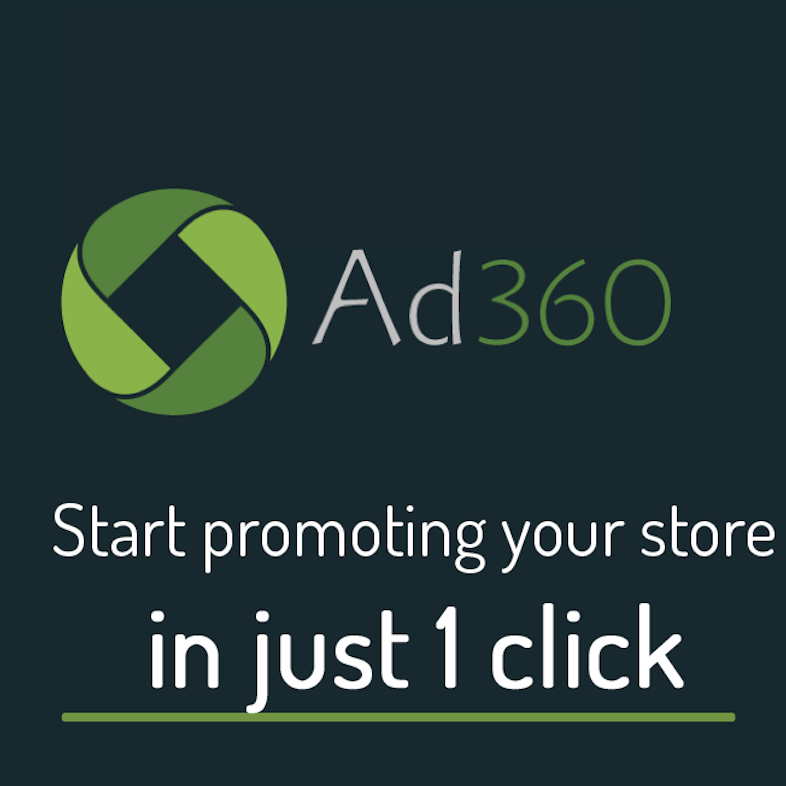
Introduction: Announcing “One Click” Quick Ads by Ad360
If you’ve really dug into online advertising as an e-commerce store owner, you know that the number of options and level of detail… it can really make your head spin! Normally, setting up ad campaigns for your Shopify store involve choosing a platform, picking a device, customizing your audience, designing ads for each segment, and finally optimizing as best you see fit. On top of maintaining your store, running basic, effective ad campaigns online becomes a full-time job within itself.
What if you could do all that promotional work with one click?
That’s what today’s announcement is about. We at Ad360 are thrilled to bring you Quick Ads, the most efficient way to organize your next e commerce advertising campaign!
Set a Budget, Pick a Location, & You’re Done
Like we said above, running an ad campaign on other advertising platforms isn’t as simple as it sounds – there are multiple settings to which audience you concentrate on, what visuals you show them, and what writing copy you put up! You then pick a budget and run “split testing” to determine if one set of ads are more effective than another. All of that… for one ad campaign. Oof.
For instance, just on one platform, there are sometimes 18 unique settings and decisions business owners have to evaluate before successfully optimizing their campaigns. EIGHTEEN!
And that’s before even getting into the design of the ad creative itself. If you’re not a maestro at Adobe illustrator or photoshop, it can take hours to create a single batch of ad banners that aren’t immediately written off as “unprofessional looking” by online users. Remember, customers on sites like Facebook, Instagram, and Tik Tok are absolutely inundated with ads constantly. If your ad design is even a little off, it will stick out like a sore thumb.
With Quick Ads, there are two inputs:
- Daily budget
- Location
That’s it. From there, Ad360’s App will automatically generate your ad campaigns to promote your store. It’s that simple!
Instantly Generated Ad Banners
Most e commerce business owners out there don’t have the budget for a full-time marketing staff – QuickAds serves as an online marketing and ad design service all in one click. Instead of manually deciding who to target, on what platform, and when, Quick Ads by Ad360 automatically extracts your e commerce store data to generate dynamic ad banners. These include pictures of your products, along with their names and prices. If you want to, you can customize the ad banners colors and templates.
Geotargeted Awareness Campaigns
After picking a location, Quick Ads will instantly begin an awareness campaign targeting the set region you specified! We’ll never go over your allotted daily budget, and you will not have to worry about all the manually settings traditionally required for online ad campaigns. Quick Ads will optimize the back end for you, so you sit back and watch how we build traffic to your store 😊
Concentrating on your specified region, your products will be visible to locals across the entire web – blogs, news sites, maybe even your favorite mobile app! Imagine playing candy crush and seeing your Shopify store pop up. You’ll probably get a text or two from your friends nearby celebrating the milestone 😊
Automatic Ad Retargeting of Customers who Browsed your site
Quick Ads will also automatically “tag” any customers who visit your site, retargeting them with ads in the future. By analyzing “customer engagement” events, retargeting concentrates your ad dollars on customers who have already expressed interest in your site’s products. On average, 98% of visitors to an e commerce site end up leaving without purchasing any goods. We can improve your conversion rate by retargeting that pool of customers. The average online user likes to see between 3-7 ads before they feel they “know” your brand, so ad retargeting is an essential service – automated by Quick Ads.
Conclusion – How to Try Quick Ads Today
If you have ever experienced frustration tinkering with your online ad campaigns, reach out to try a free demo by Ad360 today! We’re confident you’ll feel a massive burden lifted off your shoulders with our new Quick Ads service. One click, and you’re ready to go… e commerce has never been this easy 😊
Easiest way to get started on Shopify!